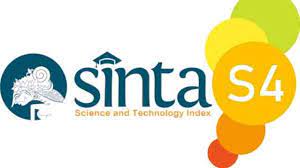GAMIFIED LEARNING ENVIRONMENT BY UTILZING BAMBOOZLE FOR EFL : SECONDARY TEACHER & STUDENTS’ VOICE
DOI:
https://doi.org/10.51878/learning.v4i4.3456Keywords:
Bamboozle, GamiEication, TechnologyAbstract
This study comperhends the Student and Teacher perspective by utilizing Bamboozle platforms in EFL Secondary Classroom. This study is designed by applying qualitative approach. The data sources taken in one of the school in Banten Province. Georaphically supported and facilitated by technology and also boosted by the needs of the curriculum to advance the technological context. The English teacher and Eive Students were Semi Structured Interviewed and observed, supported by the documentation. The data analyzed by using thematic analysis shows that, the study highlights students' increased readiness to speak in English. Because of Bamboozle's gamiEication, users are more motivated and engaged, which promotes a more positive attitude toward language learning. The study also reveals how to create a fun learning environment. With its dynamic and comfortable environment, Bamboozle's interactive features and adaptive design accommodate a wide range of learning preferences, allowing students to progress through language lessons at their own speed. Furthermore, studies show that incorporating Bamboozle into the classroom makes it easier for teachers to manage. The platform's Elexible tools and easy-to-use interface help teachers organize and run their classes effectively. Teachers are able to concentrate on providing high-quality instruction, encouraging effective communication, and customizing lessons to Eit the speciEic requirements of EFL learners because of this streamlining effect.
Downloads
References
Alam, M. I., Malone, L., Nadolny, L., Brown, M., & Cervato, C. (2023). InvesFgaFng the impact of a gamified learning analyFcs dashboard: Student experiences and academic achievement. Journal of Computer Assisted Learning, 39(5), 1436–1449.
Andriyani, N. L., & Suniasih, N. W. (2021). Development of learning videos based on problem solving characterisFcs of animals and their habitats contain in IPA subjects on 6th-grade. Journal of Educa9on Technology, 5(1), 37–47.
Behnamnia, N., Kamsin, A., Ismail, M. A. B., & HayaF, A. (2020). The effecFve components of creaFvity in digital game-based learning among young children: A case study. Children and Youth Services Review, 116, 105227.
Bereczki, E. O., & KárpáF, A. (2021). Technology-enhanced creaFvity: A mulFple case study of digital technology-integraFon expert teachers’ beliefs and pracFces. Thinking Skills and Crea9vity, 39, 100791.
Bowden, J. L.-H., Tickle, L., & Naumann, K. (2021). The four pillars of terFary student engagement and success: a holisFc measurement approach. Studies in Higher Educa9on, 46(6), 1207–1224.
Ferreira, M., MarFnsone, B., & Tali?, S. (2020). PromoFng sustainable social emoFonal learning at school through relaFonship-centered learning environment, teaching methods and formaFve assessment. Journal of Teacher Educa9on for Sustainability, 22(1), 21–36.
HidayaF, H. (2015). The Use Of Tic Tac Toe Game In Teaching Speaking Skill. Linguis9cs and ELT Journal, 3(1), 11–18.
Humaira, H. (2019). The Us of Dice Game in Teaching Vocabulary for Young Learners. Linguis9cs and ELT Journal, 5(1), 39–45.
Huseinovi?, L. (2023). The Effects of GamificaFon On Student MoFvaFon And Achievement In Learning English As A Foreign Language In Higher EducaFon. MAP Educa9on and Humani9es, 10–36. hips://doi.org/10.53880/2744-2373.2023.4.10
Kiger, M. E., & Varpio, L. (2020). ThemaFc analysis of qualitaFve data: AMEE Guide No. 131. Medical Teacher, 42(8), 846–854.
Kusrini, E. (2012). Teaching vocabulary for Junior high school students using Snake and Ladder game. Ak9f, 19(4).
Ningsi, C., & Suadiyatno, T. (2020). THE EFFECTIVENESS OF MEMORY TRICKS GAME IN TEACHING GRAMMAR. Jo-ELT (Journal of English Language Teaching) Fakultas Pendidikan Bahasa & Seni Prodi Pendidikan Bahasa Inggris IKIP, 4(2), 63–71.
Panis, I. C., Setyosari, P., Kuswandi, D., & YuliaF, L. (2020). Design gamificaFon models in higher educaFon: A study in Indonesia. Interna9onal Journal of Emerging Technologies in Learning, 15(12), 244–255. hips://doi.org/10.3991/ijet.v15i12.13965
Patra, I., Alazemi, A., Al-Jamal, D., & Gheisari, A. (2022). The effecFveness of teachers’ wriien and verbal correcFve feedback (CF) during formaFve assessment (FA) on male language learners’ academic anxiety (AA), academic performance (AP), and amtude toward learning (ATL). Language Tes9ng in Asia, 12(1), 1–21.
Qureshi, M. A., Khaskheli, A., Qureshi, J. A., Raza, S. A., & Yousufi, S. Q. (2023). Factors affecFng students’ learning performance through collaboraFve learning and engagement. Interac9ve Learning Environments, 31(4), 2371–2391.
Saud, S., Aeni, N., & Azizah, L. (2022). Leveraging Bamboozles and Quizziz to Engage EFL Students in Online Classes. Interna9onal Journal of Language Educa9on, 6(2), 169–182. hips://doi.org/10.26858/ijole.v6i2.24301
Shadiev, R., & Yang, M. (2020). Review of studies on technology-enhanced language learning and teaching. Sustainability, 12(2), 524.
Wahyuni, D., & Syafei, A. F. R. (2016). The use of acFon bingo game in teaching vocabulary to elementary school students. Journal of English Language Teaching, 5(1), 163–168.
Downloads
Published
How to Cite
Issue
Section
License
Copyright (c) 2024 LEARNING : Jurnal Inovasi Penelitian Pendidikan dan Pembelajaran

This work is licensed under a Creative Commons Attribution-ShareAlike 4.0 International License.
















